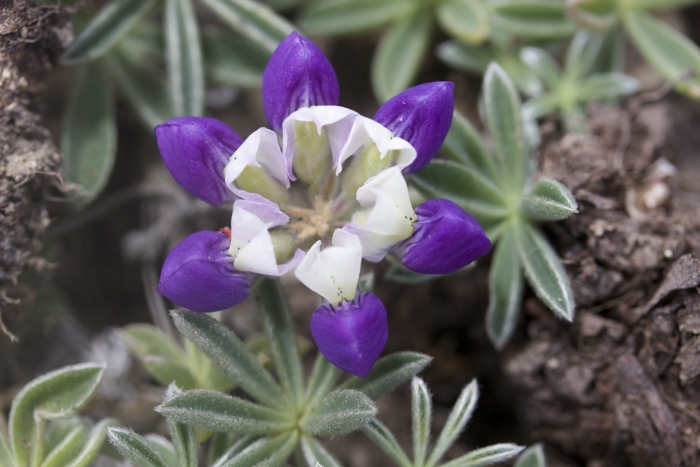Varied Lupine
(Lupinus variicolor)
Varied Lupine (Lupinus variicolor)
/
/

icosahedron
CC BY 4.0
Image By:
icosahedron
Recorded By:
Copyright:
CC BY 4.0
Copyright Notice:
Photo by: icosahedron | License Type: CC BY 4.0 | License URL: http://creativecommons.org/licenses/by/4.0/ | Rights Holder: icosahedron | Publisher: iNaturalist | Date Created: 2017-07-06T12:30:02-07:00 |






















Estimated Native Range
Summary
Lupinus variicolor, commonly known as Varied Lupine, is a perennial herb that can behave as an evergreen or semi-deciduous plant, depending on the climate. It is native to coastal dunes, coastal prairies, and open grasslands in California, particularly thriving in areas with seasonal moisture such as coastal bluffs. It typically grows to a height and width of approximately 2 feet (0.6 meters), forming a compact mound. Varied Lupine is characterized by its palmately compound leaves and its striking flowers, which are borne on erect spikes and can display a mix of blue, yellow, purple, and white hues during the blooming season in spring and early summer. The flowers are highly attractive to pollinators, adding to the ecological value of the plant.
Varied Lupine is appreciated for its vibrant flowers and ability to adapt to a range of garden settings, including wildflower meadows and native plant gardens. It is often used for erosion control on slopes and is suitable for xeriscaping due to its drought tolerance once established. While it prefers full sun, it can tolerate part shade and requires medium amounts of water with well-drained soils. It is generally low-maintenance but can be susceptible to fungal diseases in overly moist conditions. Gardeners should be aware that Lupinus species contain alkaloids and can be toxic if ingested by humans or animals.CC BY-SA 4.0
Varied Lupine is appreciated for its vibrant flowers and ability to adapt to a range of garden settings, including wildflower meadows and native plant gardens. It is often used for erosion control on slopes and is suitable for xeriscaping due to its drought tolerance once established. While it prefers full sun, it can tolerate part shade and requires medium amounts of water with well-drained soils. It is generally low-maintenance but can be susceptible to fungal diseases in overly moist conditions. Gardeners should be aware that Lupinus species contain alkaloids and can be toxic if ingested by humans or animals.CC BY-SA 4.0
Plant Description
- Plant Type: Shrub, Herb
- Height: 1.5-2 feet
- Width: 1-1.5 feet
- Growth Rate: Moderate
- Flower Color: Blue, Yellow, Purple, White
- Flowering Season: Spring, Summer
- Leaf Retention: Evergreen, Semi-Deciduous
Growth Requirements
- Sun: Full Sun, Part Shade
- Water: Medium
- Drainage: Medium
Common Uses
Bee Garden, Bird Garden, Butterfly Garden, Deer Resistant, Hummingbird Garden, Low Maintenance, Rabbit Resistant
Natural Habitat
Native to coastal dunes, coastal prairies, and open grasslands in California
Other Names
Common Names: Manycolored Lupine, Lindley’s Varied Lupine, Varicolored Lupine
Scientific Names: , Lupinus variicolor, Lupinus versicolor, Lupinus littoralis var. variicolor, Lupinus micheneri, Lupinus michneri,
GBIF Accepted Name: Lupinus variicolor Steud.